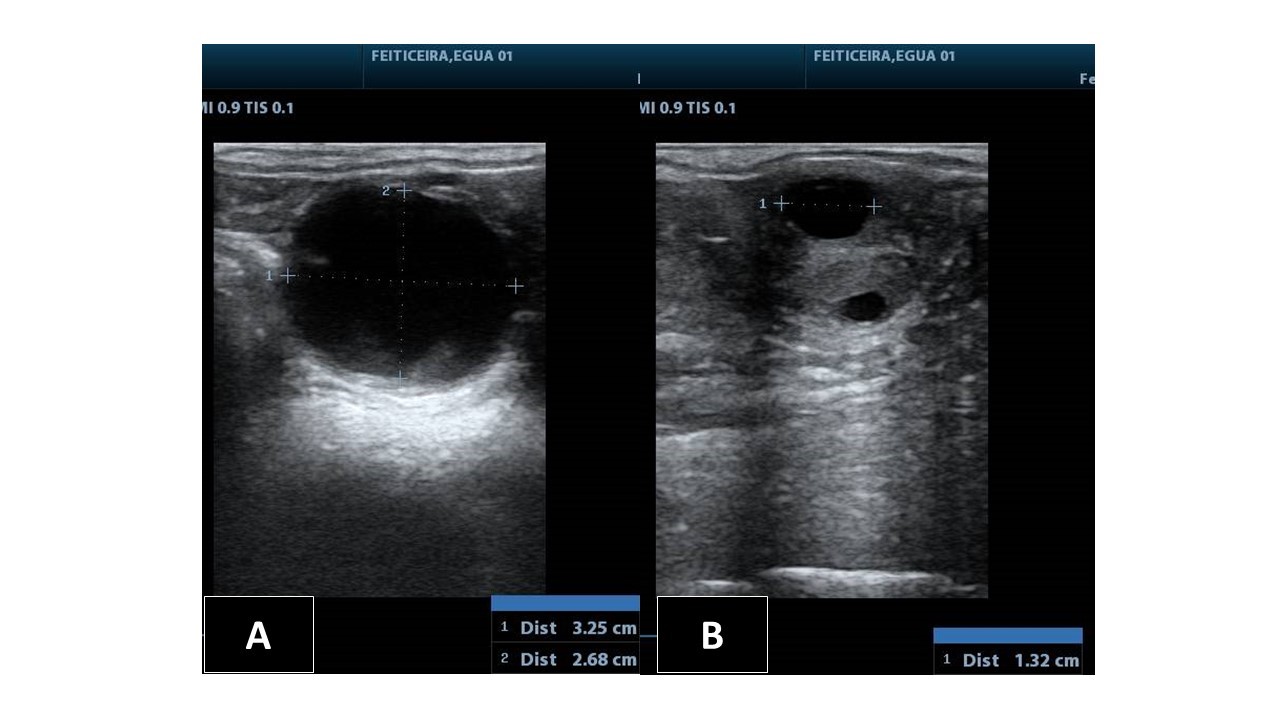Vaginal cytology in mares in the different stages of the estral cycle associated with the seasons of the year
DOI :
https://doi.org/10.21708/avb.2022.16.2.10342Résumé
The reproductive biotechnologies directly assist in the development of different methods of reproductive evaluation. The objective of this study was to develop a new method to determine the estrous cycle phase in equine females through vaginal cytology throughout the seasons, as well as to establish an estimate of inflammatory cells present in the vagina. Six mares were evaluated at different ages without a defined breed and reproductive activity and were subjected to ultrasound evaluation of the reproductive system and cytological analysis of the vaginal region. In the summer, there was a predominance of keratinized epithelial cells in the estrus and intermediate in the diestrus. In the autumn, there was a predominance of keratinized cells in estrus and parabasal cells in estrus and diestrus. In anestrus (winter), a greater number of parabasal cells was identified in relation to the other cell types. In estrus (spring), there was a predominance of parabasal and intermediate cells. Conversely, in diestrus, parabasals were found in greater numbers. The evaluation of inflammatory cells of the vaginal epithelium of mares showed greater activity in the summer; however, there are no reference values for healthy animals in the literature, and it is necessary to conduct studies on the subject. It is concluded that there is an influence of cyclicity on the vaginal epithelium of the equine species, varying according to the season. Additionally, vaginal cytological evaluation is an important complementary tool in the diagnosis of vaginitis in mares, requiring further research on the subject.
Téléchargements

Téléchargements
Publié-e
Numéro
Rubrique
Licence
(c) Tous droits réservés Acta Veterinaria Brasilica 2022

Cette œuvre est sous licence Creative Commons Attribution 4.0 International.
Autores que publicam na Acta Veterinaria Brasilica concordam com os seguintes termos: a) Autores mantém os direitos autorais e concedem à revista o direito de primeira publicação, com o trabalho simultaneamente licenciado sob a Licença Creative Commons Attribution que permite o compartilhamento do trabalho com reconhecimento da autoria e publicação inicial nesta revista. b) Autores têm autorização para assumir contratos adicionais separadamente, para distribuição não-exclusiva da versão do trabalho publicada nesta revista (ex.: publicar em repositório institucional ou como capítulo de livro), com reconhecimento de autoria e publicação inicial nesta revista. c) Autores têm permissão e são estimulados a publicar e distribuir seu trabalho online (ex.: em repositórios institucionais ou na sua página pessoal) a qualquer ponto antes ou durante o processo editorial, já que isso pode gerar alterações produtivas, bem como aumentar o impacto e a citação do trabalho publicado (Veja O Efeito do Acesso Livre).


 Esta obra está licenciada com uma Licença
Esta obra está licenciada com uma Licença 